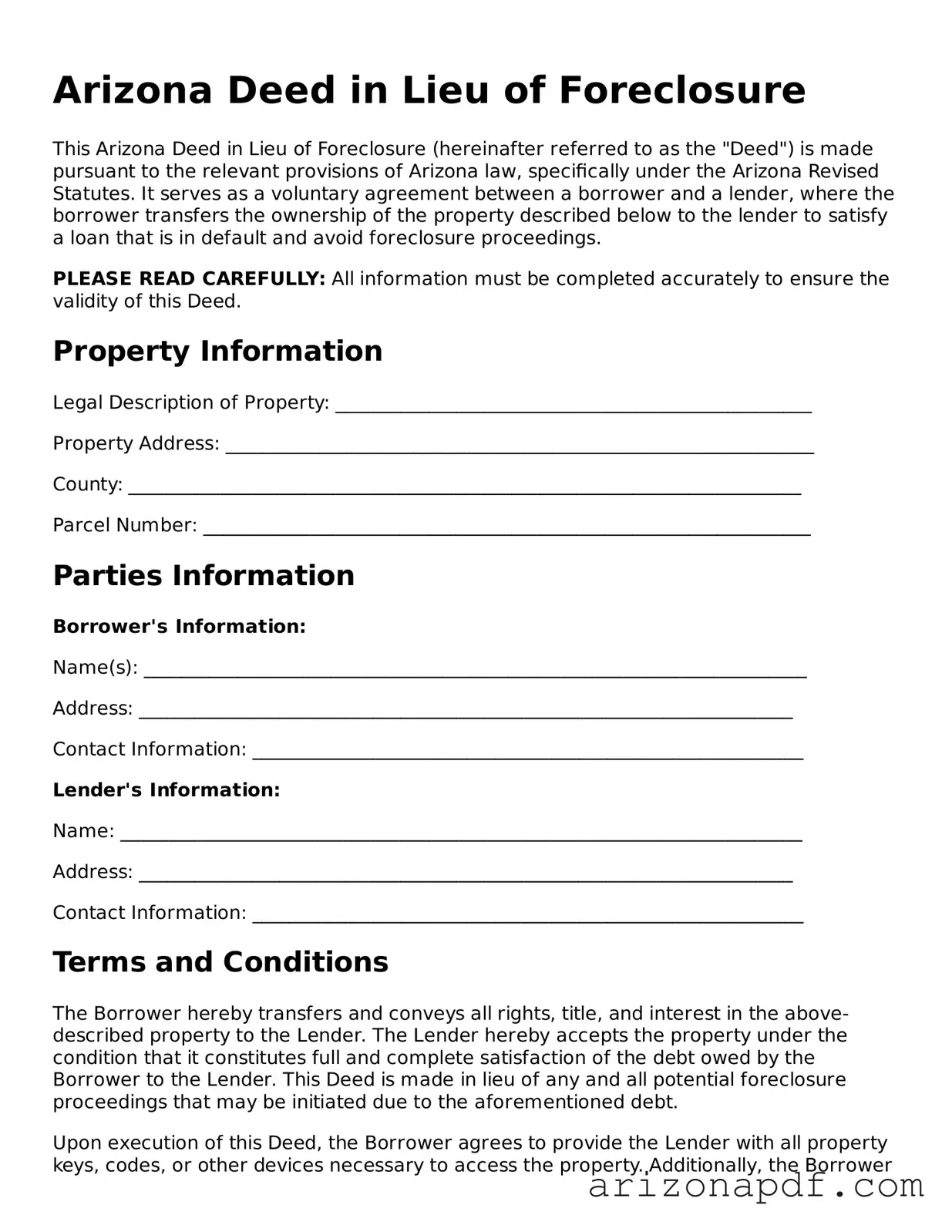Arizona Deed in Lieu of Foreclosure
This Arizona Deed in Lieu of Foreclosure (hereinafter referred to as the "Deed") is made pursuant to the relevant provisions of Arizona law, specifically under the Arizona Revised Statutes. It serves as a voluntary agreement between a borrower and a lender, where the borrower transfers the ownership of the property described below to the lender to satisfy a loan that is in default and avoid foreclosure proceedings.
PLEASE READ CAREFULLY: All information must be completed accurately to ensure the validity of this Deed.
Property Information
Legal Description of Property: ___________________________________________________
Property Address: _______________________________________________________________
County: ________________________________________________________________________
Parcel Number: _________________________________________________________________
Parties Information
Borrower's Information:
Name(s): _______________________________________________________________________
Address: ______________________________________________________________________
Contact Information: ___________________________________________________________
Lender's Information:
Name: _________________________________________________________________________
Address: ______________________________________________________________________
Contact Information: ___________________________________________________________
Terms and Conditions
The Borrower hereby transfers and conveys all rights, title, and interest in the above-described property to the Lender. The Lender hereby accepts the property under the condition that it constitutes full and complete satisfaction of the debt owed by the Borrower to the Lender. This Deed is made in lieu of any and all potential foreclosure proceedings that may be initiated due to the aforementioned debt.
Upon execution of this Deed, the Borrower agrees to provide the Lender with all property keys, codes, or other devices necessary to access the property. Additionally, the Borrower certifies that the property is free of all liens, claims, or encumbrances, except as specifically described herein.
Signatures
This Deed shall not be effective until signed by both the Borrower and the Lender. Upon signing, this Deed shall be recorded with the County Recorder's Office in the county where the property is located to ensure it becomes part of the public record.
IN WITNESS WHEREOF, the parties have set their hands and seals on this ______ day of _______________, 20____.
__________________________________
Borrower's Signature
__________________________________
Lender's Signature
Acknowledgment
This section requires notarization by a licensed notary public to verify the identities of both the Borrower and the Lender, ensuring that they signed this document willingly and under no duress.
State of Arizona
County of _______________________
Subscribed and sworn before me on this ______ day of _______________, 20____, by ____________________________ (Borrower) and ____________________________ (Lender).
__________________________________
Notary Public's Signature
My commission expires: _______________
